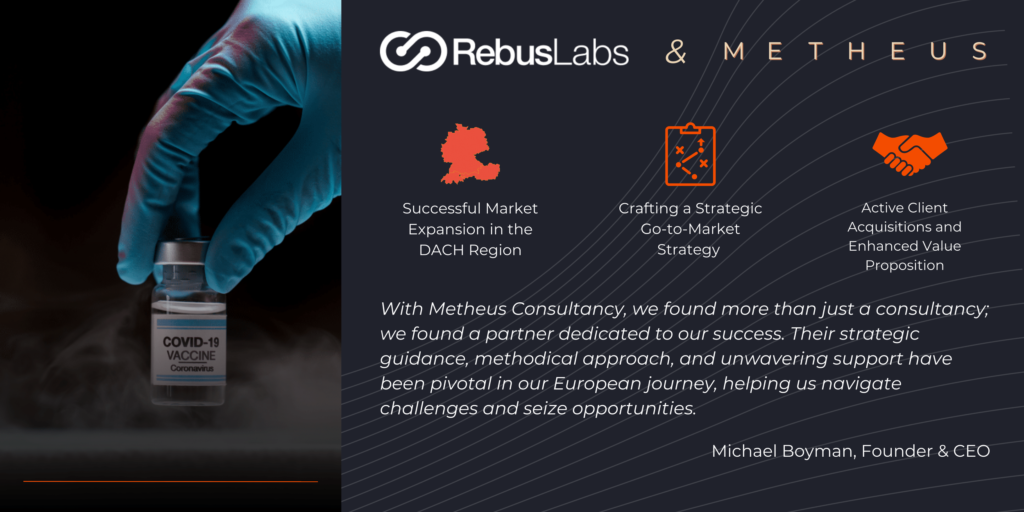It is never easy to break into a new market. Businesses have to face many challenges such as fierce competition, complex ecosystem, and constantly changing industry trends. And in this expansion journey, understanding the market is the key of any market expansion. From the events based of MediaBeacon’s case study even some of the largest international companies in the world can fail in market expansion such as Starbucks being unsuccessful in Australia and Walmart failing in Japan due to the lack of market understanding. Moreover, it is not just big companies that fail in their target market expansion process, start-ups can fail too. According to a Statista analysis, 35% of start-up failures are attributable to the market not having a demand for the startup’s product, 20% are due to the startup being outcompeted which both can be linked to a misunderstanding in the market.
One critical step that can help reduce the risk of failure is understanding market demand, players in the market and having a detailed plan which can be done by conducting a market feasibility analysis. In this post, we’ll explore what market feasibility analysis is, why it’s important, and how to do it.
What is a market feasibility analysis?
A market feasibility analysis is the process of determining whether or not there is a market for your product, service or business. It involves analyzing the size of this market, its growth potential and competition within it.
The goal of market feasibility analysis is to answer two essential questions: Is there a need for the product or service, and can the business make a profit by meeting that need? By answering these questions, entrepreneurs can make informed decisions about whether to pursue a business idea, how to structure their business to maximize its chances of success or whether to expand the business into new markets or not.
Market Feasibility Analysis is a complex exercise that requires deep understanding of market dynamics, strategic methods and expansion mindset. However, at the end it will provides with a powerful output that reveals the potential of the market.
The importance and benefits of market feasibility analysis for startups
The market feasibility analysis helps you understand the market, the competitors and customers. It also helps you to understand the size of your target market and its growth rate. This analysis is an important part of establishing whether or not it’s feasible for you to compete in a particular industry.
Here are some key benefits of conducting a market feasibility study:
-
Identifies market demand: A market feasibility analysis helps entrepreneurs identify the demand for their product or service. It provides insights into the size of the target market, consumer preferences, and behavior, which helps entrepreneurs understand their potential customers better.
-
Evaluates competition: A market feasibility analysis helps entrepreneurs evaluate their competition. It provides insights into the number of competitors, their strengths and weaknesses, and the strategies they use. This information helps entrepreneurs understand how they can differentiate their product or service from their competitors.
-
Helps in pricing strategy: A market feasibility analysis helps entrepreneurs determine the price of their product or service. It provides insights into the pricing strategies of competitors and the willingness of customers to pay for the product or service.
-
Helps in marketing strategy: A market feasibility analysis helps entrepreneurs develop their marketing strategy including which go-to-market channels to use and what will be their market entry strategy. It provides insights into the target audience, their needs and preferences, and the best ways to reach them.
-
Reduces business risk: A market feasibility analysis helps entrepreneurs identify potential challenges and risks that could derail their business, such as a lack of demand, intense competition, or pricing barriers. By addressing these issues proactively, entrepreneurs can reduce the risk of failure and avoid costly mistakes.
What does a market feasibility analysis include?
A market feasibility analysis is a comprehensive process that includes several key components.
Understand the Market
The first step is understanding the market, which involves defining the industry, market, and business for which you’re conducting analysis, as well as identifying the characteristics of your target market. This includes researching the market and analyzing data to determine factors such as market size, demographics, consumer behavior, and trends. This step lays the foundation for the rest of the analysis and helps you determine whether or not there is a need for your product or service.
“A common startup mistake is not taking the time to understand the market or customers you’re building for. For technical founders, writing code can seem easier than talking to customers, but there’s no way to know if you’re on the right track unless you’re constantly getting feedback from current or prospective customers. It’s important to recognize that building a great product often doesn’t translate into a successful business. Many companies find themselves focusing on a market that’s simply too small to build a big business in.” said the co-founder and CEO, OneSignal, George Deglin.
Understand the demand
After understanding the market, the next step is to understand the demand. By understanding the demand, you can determine whether or not there is a need for your product or service and whether or not you can compete effectively in the market. This step helps you develop a targeted marketing strategy that resonates with your customers and positions your business as a viable solution to their needs.
Estimate Your Supply Capacity
Estimating your supply capacity is another critical component of a market feasibility analysis. This step requires you to determine your competitive advantage, such as the unique features or benefits of your product or service, and assess the cost of production and potential profit margins.
Analyze demand and supply factors including external factors
Furthermore, you must analyze demand and supply factors, including external factors that impact your business and its target market(s), such as the regulatory landscape and potential risks and challenges.
To learn more about the risks and challenges and how they cause a failure, read our “Why some companies fail in their market expansion” blog!
After understanding the demand and supply factors of the market, a market feasibility analysis should also take into account the external factors that may impact the business and its target market(s). These external factors can include changes in technology, shifts in the economy, political and regulatory changes, and social and cultural trends.
For example, changes in technology may impact the demand for a particular product or service. As new technologies emerge, they may make existing offerings obsolete or create new opportunities for innovation. Similarly, shifts in the economy can impact consumer behavior and their willingness to spend on certain products or services.
Plan and Test Your Strategy
The final step in conducting a market feasibility analysis is to plan and test your strategy.
The strategy planning process allows businesses to assess their competitive advantages, determine pricing and distribution strategies, and identify marketing tactics that will resonate with their target audience. Additionally, it can help businesses identify potential barriers to entry and develop contingency plans to mitigate risks. The importance of planning your strategy cannot be overstated, as it can help businesses make informed decisions about their offerings and set a course for success. “Too many businesses start without a basic plan, and if you fail to plan, you are essentially planning to fail. A startup should map out a business plan , even if it is just one page. It should include how much it costs to operate, how much they anticipate selling, who would buy their product and why.” – says the founder of Well Kept Wallet, Deacon Hayes.
The next step after developing your strategy is to test it. Testing your strategy involves assessing the viability of your business idea or product in a real-world setting. This can be done through market testing, such as pilot programs or focus groups, to gather feedback from potential customers and identify areas for improvement. By testing your strategy, you can refine your approach and better understand the potential success of your business idea. This can help you make informed decisions about whether to move forward with the proposed offering or adjust your strategy to better align with market demand.
To learn more about what a market feasibility analysis include, stay tuned for our next blog: “Steps to conduct a market feasibility analysis!”.
How to conduct a market feasibility study?
Conducting a market feasibility study can be done with an in depth research. This includes researching macro-datas, such as industry trends, market size and growth projections, and regulatory and economic factors. It also involves researching insights, such as customer behavior and preferences, competitive landscape, and potential barriers to entry. Based on this research, you can create hypothesises regarding possible developments and changes that can occur in the contents of the planned steps.
To conduct a market feasibility study, you can use a combination of primary and secondary research methods. Primary research involves gathering information directly from potential customers, competitors, and other stakeholders through surveys, interviews, and focus groups. Secondary research involves gathering information from publicly available sources, such as industry reports, government statistics, and news articles.
Alternatively, you can get an external consultancy to conduct a market feasibility study for you. This approach can offer several benefits, such as access to specialized expertise, more extensive research capabilities, and unbiased analysis. When you conduct market feasibility analysis with an expert, the results become more high-quality and more to the point.
At Metheus Consultancy, we offer market feasibility analysis services with over 25 years of market entry experience across different geographies and company industries. Our team of experts can help you assess the potential success of your business idea or product and develop a comprehensive strategy for bringing it to market. To learn more about what we can do for you, contact us!





